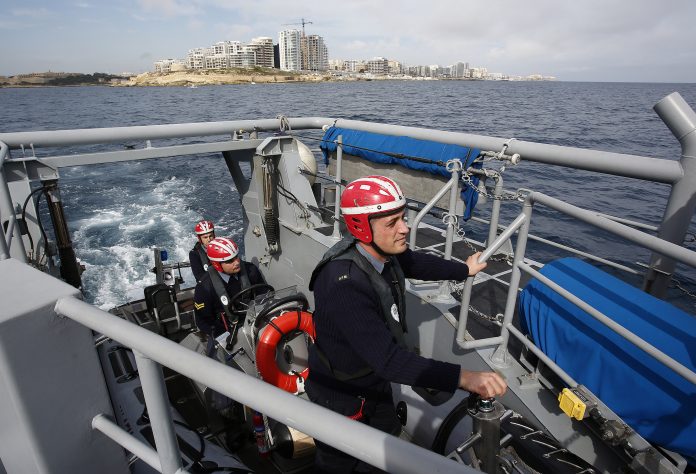Today, the Council green-lighted the political agreement reached last week to reinforce the European Border and Coast Guard, giving it the right level of ambition to respond to the common challenges Europe is facing in managing migration and borders.
The centre piece of the reinforced Agency will be a standing corps of 10,000 border guards – ready to support Member States at any time. The Agency will also have a stronger mandate on returns and will cooperate more closely with non-EU countries, including those beyond the EU’s immediate neighbourhood. Agreed in the record time of just over 6 months, the new European Border and Coast Guard represents a step-change in the EU’s ability to collectively better protect Europe’s external borders.
“In an area of free movement without internal border controls, strengthening and managing Europe’s external borders is a shared responsibility. I am glad to see that a 10,000-strong standing corps with the necessary equipment will help Member States to better protect our borders and our citizens. By working together constructively and swiftly, we can create a safer Europe,” said First Vice-President Frans Timmermans.
“From now onwards, the European Border and Coast Guard will have the full operational capacity and powers needed to effectively and fully support Member States on the ground, at all times. Better controlling our external borders, fighting irregular migration, carrying out returns and cooperating with third countries – we can only succeed if we do this together. Ultimately, this will also help preserve the long-term viability of the Schengen area of free movement,” added Commissioner for Home Affairs, Migration and Citizenship Dimitris Avramopoulos.
The Agency supports Member States and does not replace their responsibilities in external border management and return. The reinforced European Border and Coast Guard Agency will be equipped with more resources and capabilities including:
A standing corps of 10,000 border guards: A standing corps of 10,000 border guards will be set up by 2027 and will ensure that the Agency can support Member States whenever and wherever needed. The standing corps will bring together Agency staff as well as border guards and return experts seconded or deployed by Member States, who will support the over 100,000 national border guards in their tasks. In addition, the Agency will have a budget to acquire its own equipment, such as vessels, planes and vehicles.
Executive powers: The standing corps will be able to carry out border control and return tasks, such as identity checks, authorising entry at the external borders, and carrying out borders’ surveillance – only with the agreement of the host Member State.
More support on return: In addition to organising and financing joint return operations, the Agency will now also be able to support Member States at all stages of return process with Member States remaining responsible for taking return decisions. This support will include for example by identifying non-EU nationals with no right to stay or acquiring travel documents.
Stronger cooperation with non-EU countries: The Agency will be able – subject to prior agreement of the country concerned – to launch joint operations and deploy staff outside the EU, beyond countries neighbouring the EU, to provide support on border and migration management.
Antenna offices: The Agency will be able to set up antenna offices in Member States and in a non-EU country (subject to a status agreement) to support logistically its operational activities and guarantee the smooth running of the Agency’s operations.
The European Parliament’s LIBE Committee still has to confirm the political agreement reached in trilogues on 28 March. Then both the European Parliament and the Council will have to formally adopt the Regulation. The text will then be published in the Official Journal of the European Union and the European Border and Coast Guard’s enhanced mandate will enter into force 20 days later. The new European Border and Coast Guard standing corps will be available for deployment starting from 2021, once it becomes fully operational and will reach its full capacity of 10,000 border guards by 2027.

